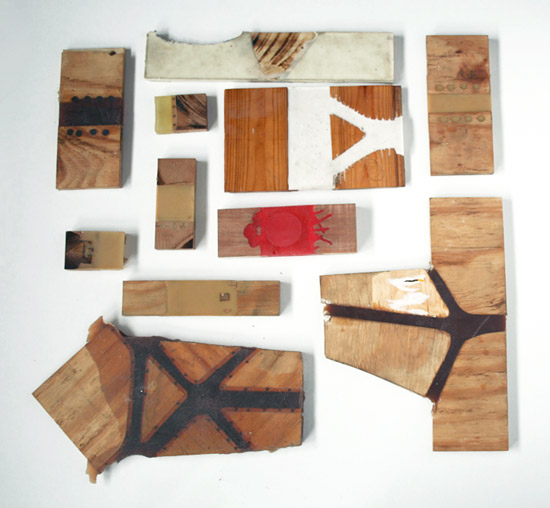Research Material
Different sources and subjects. This is a collection of notes and activity logs done on a daily basis
FINAL PROJECT
HandSight
A Glove for the Blind to Feel Shapes and Navigate Obstacles
[software & programming research]
"HandSight is a prototype glove to aid the blind. It can sense the lightness or darkness of a surface with tactile feedback from a vibration motor for each individual finger. It can also sense distance from physical objects or obstructions and indicate direction and distance with the same vibration feedback. It supports additional modes, and the possibilities are nearly endless. The glove can connect over Blue-tooth to switch modes and visualize the sensor readings."
3D PRINT & Scan
mit
self assembly
[structure research]
FINAL PROJECT
Nervous system
Dress folding
[structure research]
Similar cells and joints for the desired "skin"
Nervous system Design making of KINEMATICS
Nervous system, folding software
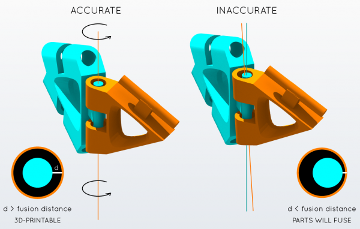
kinematic joints by nervous system

FINAL PROJECT
Finger gloves
Rebecca Horn
[sensorial feedback research]
Ideas of touch and sensory awareness are explored in this work. Horn has described how wearing these gloves altered her relationship with her surroundings, so that distant objects came within her reach: 'the finger gloves are light. I can move them without any effort. Feel, touch, grasp anything, but keeping a certain distance from the objects. The lever-action of the lengthened fingers intensifies the various sense-data of the hand; ...I feel me touching, I see me grasping, I control the distance between me and the objects. Implicit in the work is the idea that touching makes possible an intimacy between our own body and those of others.
Finger-Gloves 1972
FINAL PROJECT
Daniel Rosenberg
MIT PhD student
[sensorial feedback research]

FINAL PROJECT
NASA SIGHT SWITCH
eye motion control
[interface research]
"The NASA Sight Switch would allow an astronaut to actuate a control with the simple movement of the eye."
“Hand-Mounted Haptic Feedback Sonar Obstacle Avoidance Assistance Device". It measures the distance to things and translates that into pressure on the wrist.
Haptic Glove: It's wrist mounted and senses objects from about 1 inch (2 cm) to 10 feet (3.5m). It has generally fast response time (fractions of a second) to quickly navigate complex environments. It's designed to help a vision impaired person to navigate complex environments. Mounted to the back of the hand, the force feedback means it doesn't interfere with other assistance devices that mount elsewhere and use audio feedback cues. The learning curve is measured in seconds, everyone who has worn it has figured it out immediately.""
The thread is thin, light, and flexible, plus it's water resistant and won't be damaged by washing, which makes it suitable for clothing worn everyday. Woven into tight fitting garments, each fiber optic thread can hold up to ten sensors, which recognize flexing joints and other movements. It can also send signals to a small power pack, then on to a smart-phone. From here, custom algorithms interpret and analyze the data.
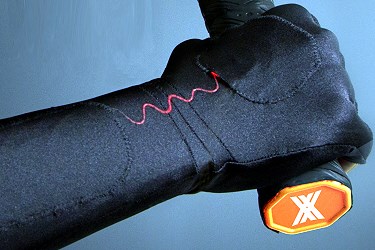
FINAL PROJECT
METRO DOT BRACELET
[display & material research]
Visually impaired people experience many difficulties when using the public transportation. When you are on the subway, the most commonly used transportation, you must pay careful attention to the announcements at all times until you reach your destination. If you miss the announcements or couldn't hear them due to the noise, it is difficult to identify which station you are currently at or how much further you need to go.
Metro Dot offers the visually impaired to confirm their location by touch, easing the burden of having to continually keep their ears open for subway announcements. Thus, allowing them to enjoy their time freely during their ride. It is hoped that the visually impaired have the option of receiving subway information in other ways other than through hearing only. Designer : Hoyeoul Lee, Jinwoo Kim and Sangyong Choi
bracelet metro dot
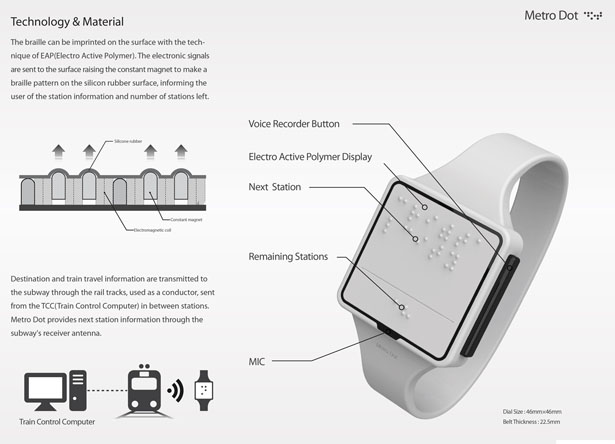
Final Project
Munivo device
[Shape & Product research]
Ultrasound technology (remote sensing) forms the base of this trouble-free and handy device. Munivo sends information to the electronic control unit after measuring distance between the subject and the potential obstacles that is carried on two axes, X and Y. Moving on two axes; signals are transmitted to the subject, in the form of spheres through roller-type electromagnetic actuators, hence, giving instructions to the topic to steer clear of any hindrance. Actuators placed in the silicon films which are directly in contact with the palm gets control signals, after the device processes signals from sensors.
Munivo
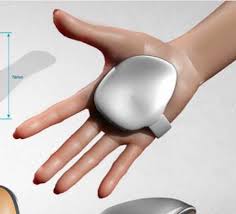
Final Project
Imogen Heap's music gloves
could help disabled people "fulfill what's in their head"
Final Project
Sound navigation for blind
echolocation
"See the clicking is like a language you are asking the environment: where are you? and What are you? and the click sends sound waves, physical manifestations that go out into the environment and return to the listener with inprints of what they encounter. It's almost as taking a mold of something in a way.
How does it work? What really happens it it's in the brain, seeing it's in the brain.
..(finish transcript)...
"flexing the chair into shape wood has long been used as a primary material for producing furniture, in which designers have connected, carved and bent the natural material into various 3D shapes. 'Elastic Wood' focuses on wood joinery and seeks to explore what happens when they become flexible. its production is influenced by the process of over molding, where two materials are used to complete an enhance each other's characteristics. here, wood is used for its compatibility for home furniture - its touch and warm aesthetic - while the elastic material is used for the purpose of transforming the 2D spread into a 3D shape. the combination of the two materials adds the aspect of flexibility to a typically rigid piece of furniture produced in wood."
Bach-y-Rita
Sensorial substitution
re-wiring the brain
"Bach-y-Rita's most notable work was in the field of neuroplasticity. He is seen as the first to propose the concept of sensory substitution to treat patients with disabilities, often those caused by neurological problems. One of the first applications of sensory substitution he created was a chair which allowed blind people to 'see'. The trials he conducted in 1969 are now regarded to be the first form of experimental evidence for neuroplasticity and the feasibility of sensory substitution.[6] Later in his career, Bach-y-Rita created a device which enabled patients with damaged vestibular nuclei to regain their ability to remain balanced, by using an electrical stimulator placed on the tongue which reacted to a motion sensor affixed to the patient. This application enabled patients to remain balanced without the equipment after several weeks use."
Resources:
MIT medialab
Tagme
AN EASY-TO-USE TOOLKIT FOR TURNING THE PERSONAL ENVIRONMENT INTO AN EXTENDED COMMUNICATIONS INTERFACE
Tagme project FLUID INTERFACES"TagMe is an end-user toolkit for easy creation of responsive objects and environments. It consists of a wearable device that recognizes the object or surface the user is touching. The user can make everyday objects come to life through the use of RFID tag stickers, which are read by a RFID bracelet whenever the user touches the object. We present a novel approach to create simple and customizable rules based on emotional attachment to objects and social interactions of people. Using this simple technology, the user can extend their application interfaces to include physical objects and surfaces into their personal environment, allowing people to communicate through everyday objects in very low effort ways."
Embeded programming
5 Resons why
Architects should learn how to code
"Architects are notorious right-brained thinkers. We like to rely on intuition and creativity to solve problems. We like subjectivity. We take creative risks. We like to break the rules. However, you can't approach every problem with this mindset. Sometimes you need a more rigorous approach. You need objectivity. Algorithmic thinking is the opposite of intuitive thinking. It involves using a step-by-step process to solve a problem. It is objective at it's core – the problem is either solved or it isn't. Coding requires algorithmic thinking. It forces you to think through all the steps of a problem. You must consider all the inputs and the outputs of the program."
MIT medialab
FingerReader
A WEARABLE INTERFACE FOR READING ON-THE-GO
The FingerReader is just a research prototype at this point, but it may turn into a product in the near future.
"The FingerReader is a wearable device that assists in reading printed text. It is a tool both for visually impaired people that require help with accessing printed text, as well as an aid for language translation. Wearers scan a text line with their finger and receive an audio feedback of the words and a haptic feedback of the layout: start and end of line, new line, and other cues. The FingerReader algorithm knows to detect and give feedback when the user veers away from the baseline of the text, and helps them maintain a straight scanning motion within the line."
MC10
Wearable Tech
That Feels Like Skin
MC10, a company based in Cambridge, Mass., is testing attachable computers that look like small rectangular stickers, about the size of a piece of gum, and can include wireless antennas, temperature and heart-rate sensors and a tiny battery.
"While these wearables raise novel privacy concerns, their advocates say there are numerous benefits. Attachable computers will be less expensive to make, provide greater accuracy because sensors will be closer to a person's body (or even inside us) and offer the most utility, as something people won't forget to wear. MC10, a company based in Cambridge, Mass., is testing attachable computers that look like small rectangular stickers, about the size of a piece of gum, and can include wireless antennas, temperature and heart-rate sensors and a tiny battery."
Cyborg Foundation
Niel Harbinson:
I listen to color
Extending our senses, Niel Harbinson is the founder of the Cyborg Foundation, a non-profit organization that encourages the use of electronic equipment to augmentate our sensorial realm.
At the start, though, I had to memorize the names you give for each color, so I had to memorize the notes, but after some time, all this information became a perception. I didn't have to think about the notes. And after some time, this perception became a feeling. I started to have favorite colors, and I started to dream in colors. So, when I started to dream in color is when I felt that the software and my brain had united, because in my dreams, it was my brain creating electronic sounds. It wasn't the software, so that's when I started to feel like a cyborg. It's when I started to feel that the cybernetic device was no longer a device. It had become a part of my body, an extension of my senses, and after some time, it even became a part of my official image.
TED talk
David Eagleman:
Can we create new senses for humans?
using this vest "he will have a direct perceptual experience of hearing in the same way that when a blind person passes a finger over braille, the meaning comes directly off the page without any conscious intervention at all."
"we're trapped on this very thin slice of perception (...) take the colors of our world. This is light waves, electromagnetic radiation that bounces off objects and it hits specialized receptors in the back of our eyes. But we're not seeing all the waves out there. In fact, what we see is less than a 10 trillionth of what's out there. So you have radio waves and microwaves and X-rays and gamma rays passing through your body right now and you're completely unaware of it, because you don't come with the proper biological receptors for picking it up. There are thousands of cell phone conversations passing through you right now, and you're utterly blind to it."

 Finger-Gloves 1972
Finger-Gloves 1972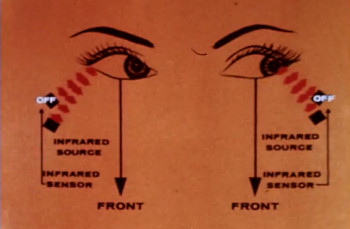
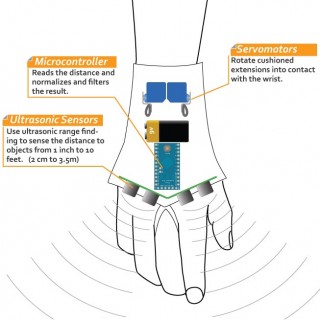
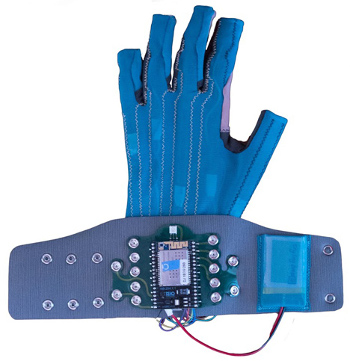 DYI The gloves project - loads of research!
DYI The gloves project - loads of research!